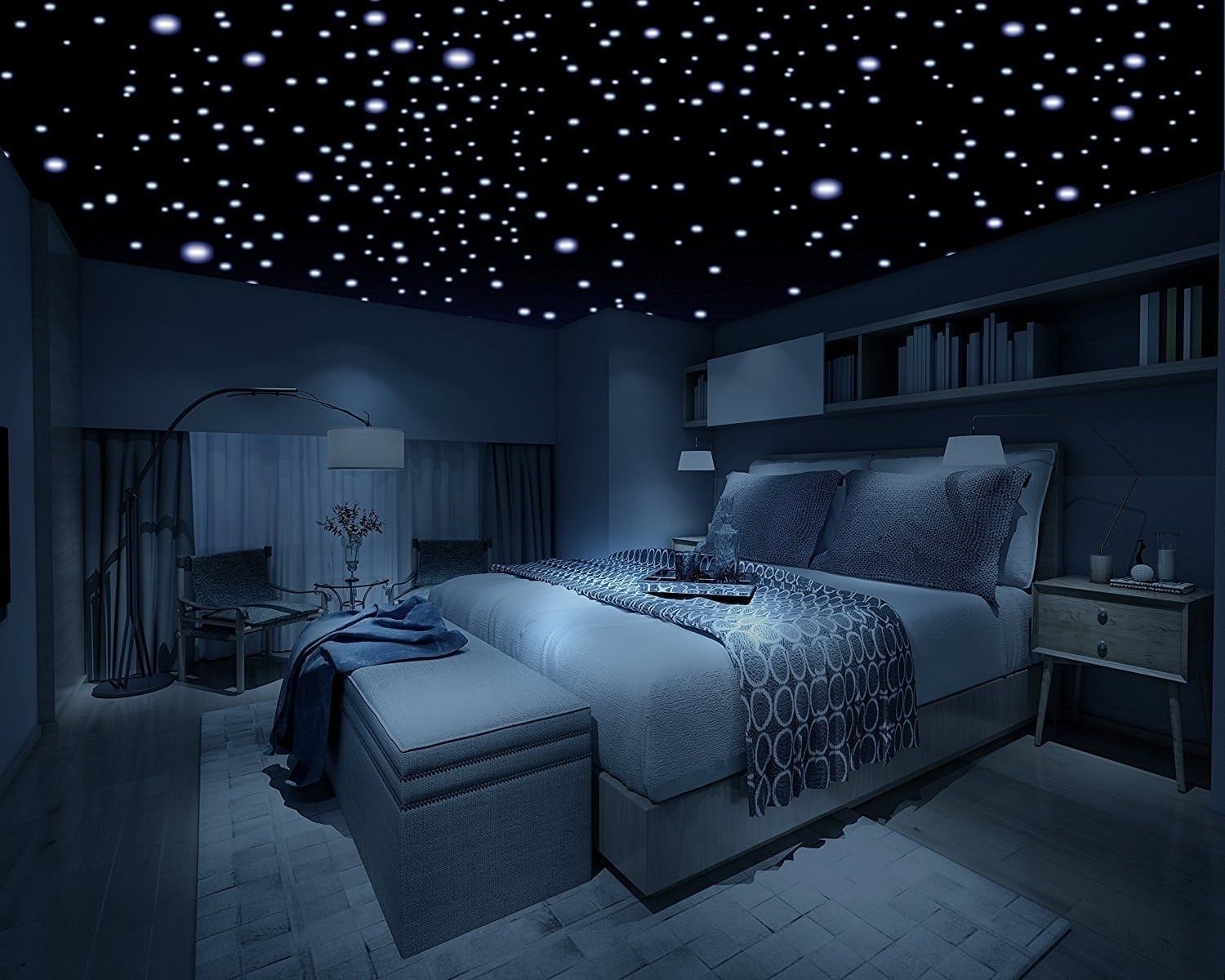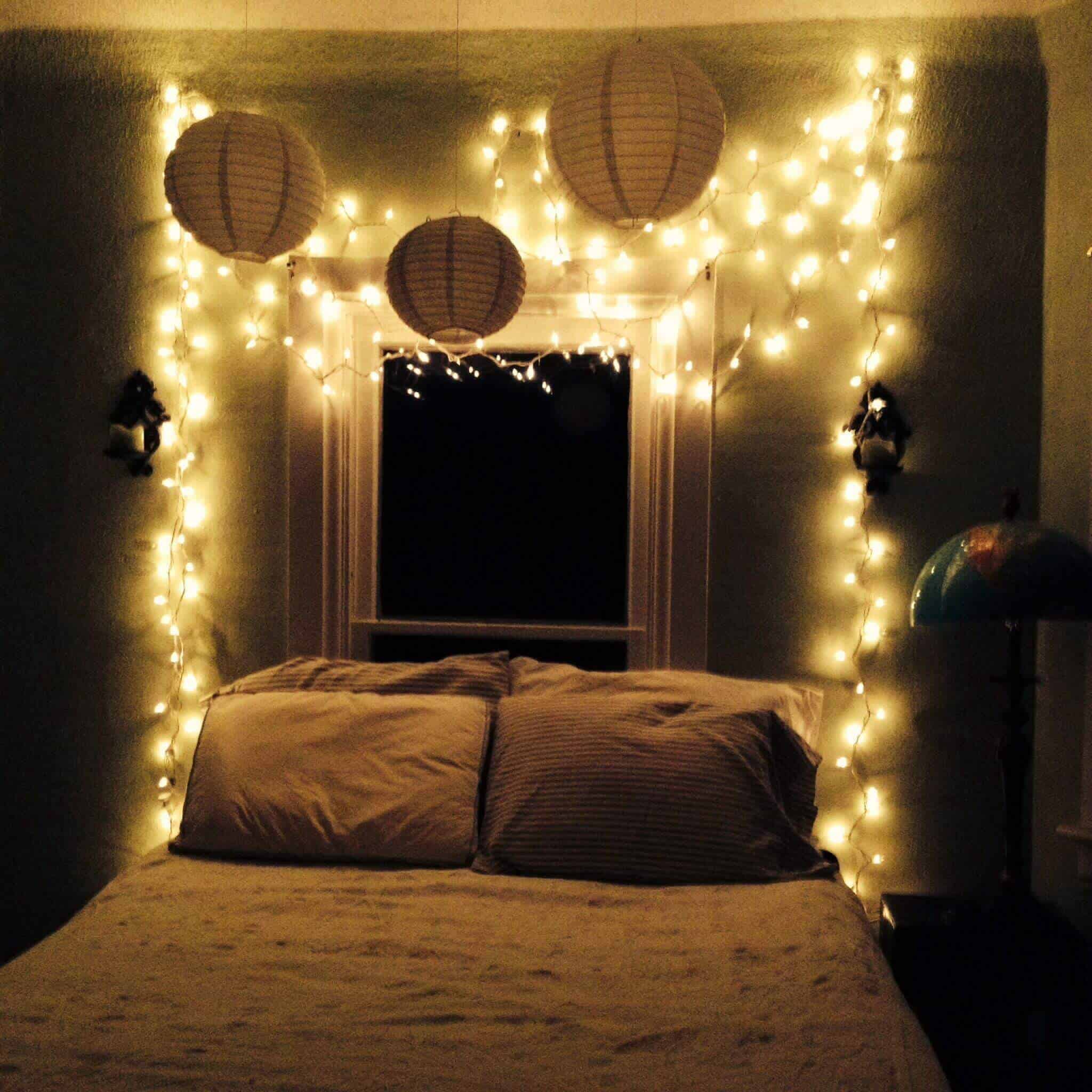Benefits of Soothing Lights for Sleep: Soothing Lights For Bedroom

Creating a calming and relaxing atmosphere in your bedroom is essential for a good night’s sleep. Soothing lights, with their gentle and warm glow, can play a significant role in promoting relaxation and improving sleep quality. Let’s explore the science behind how these lights work their magic.
Impact of Light on Sleep
The human body has a natural sleep-wake cycle, known as the circadian rhythm, which is regulated by light exposure. Light signals the body to be awake and active, while darkness triggers the release of melatonin, a hormone that promotes sleep. This intricate interplay between light and sleep is crucial for maintaining healthy sleep patterns.
How Soothing Lights Promote Relaxation and Sleep
- Reduced Blue Light Exposure: Blue light, emitted from electronic devices and some artificial lighting, can suppress melatonin production and disrupt the circadian rhythm, making it harder to fall asleep. Soothing lights, typically emitting warm white, amber, or red light, minimize blue light exposure, promoting melatonin production and facilitating sleep onset.
- Stimulation of Melatonin Production: The warm tones of soothing lights, particularly amber and red, have been shown to be more effective in triggering melatonin release compared to cooler white light. This natural sleep hormone helps regulate the sleep-wake cycle and promotes deeper, more restful sleep.
- Creation of a Relaxing Atmosphere: Soft, warm light creates a calming and inviting atmosphere in the bedroom, signaling to the body that it’s time to unwind and prepare for sleep. The absence of harsh or bright light reduces stimulation and promotes relaxation, easing the transition into slumber.
Influence of Different Light Colors on Sleep
Different colors of light can have varying effects on mood and sleep quality.
- Warm White: Warm white light, with a color temperature of around 2700K, is often considered the most suitable for sleep. It provides a calming and relaxing atmosphere without being too stimulating.
- Amber: Amber light, with a color temperature of around 2200K, is even warmer than warm white and has been shown to be particularly effective in promoting melatonin production and sleep. It can create a cozy and inviting ambiance, ideal for bedtime reading or relaxation before sleep.
- Red: Red light, with a color temperature of around 1800K, is the warmest color and can have a significant impact on melatonin production. It can be very effective in inducing sleep, but it may also be too stimulating for some individuals.
Types of Soothing Lights for Bedrooms

Choosing the right type of light for your bedroom can significantly impact your sleep quality and overall well-being. While the benefits of soothing lights for sleep have been discussed, understanding the different types available and their specific characteristics is crucial for making an informed decision.
Bedside Lamps, Soothing lights for bedroom
Bedside lamps are a popular choice for bedroom lighting, offering a balance of functionality and ambiance. They provide a focused light source for reading or other activities before bed, while also contributing to the overall mood of the room.
- Features: Bedside lamps come in various styles, sizes, and materials, offering a wide range of design options to complement your bedroom decor. They can be equipped with different types of bulbs, including incandescent, LED, and halogen, each offering distinct advantages in terms of brightness, energy efficiency, and color temperature.
- Pros: Bedside lamps provide adjustable brightness, allowing you to control the intensity of light based on your needs. They offer a warm and inviting ambiance, contributing to a relaxing atmosphere. The flexibility in choosing bulbs enables you to customize the light’s color temperature, adjusting it to suit your preferences.
- Cons: Some bedside lamps can be bulky and take up valuable space on your nightstand. The choice of bulb type can influence the overall cost of operation, with incandescent bulbs being less energy-efficient than LED options.
Nightlights
Nightlights serve a specific purpose: providing a soft and comforting glow for navigating your bedroom at night without disturbing your sleep. They are typically designed to emit a low level of light, ideal for reducing the risk of stumbling in the dark.
- Features: Nightlights come in various forms, including plug-in versions, battery-operated options, and even those that project images or patterns on the ceiling. They often feature soft, warm-toned LED bulbs that emit a calming light. Some nightlights offer additional features like motion sensors, automatically activating the light when movement is detected.
- Pros: Nightlights offer a gentle and unobtrusive light source, promoting a sense of security and reducing anxiety about the darkness. They are energy-efficient and typically consume minimal power. The low brightness level minimizes disruption to sleep, allowing you to wake up feeling refreshed.
- Cons: Some nightlights can emit a slightly blue light, which may interfere with melatonin production and hinder sleep quality. They may not be suitable for individuals who are sensitive to light or find it difficult to fall asleep in any level of light.
Smart Bulbs
Smart bulbs are a modern and versatile lighting solution, offering advanced features and control options. They can be integrated into your home automation system, allowing you to customize their brightness, color temperature, and even schedule them to turn on and off automatically.
- Features: Smart bulbs are typically LED bulbs that connect to your home’s Wi-Fi network, enabling you to control them remotely using a smartphone app or voice assistants like Amazon Alexa or Google Assistant. They offer a wide range of color options, allowing you to create different moods and atmospheres in your bedroom. Some smart bulbs even feature built-in sleep timers, automatically dimming the light over time to signal your body that it’s time to wind down.
- Pros: Smart bulbs provide a high level of customization, allowing you to adjust the light’s brightness, color, and schedule to your liking. They are energy-efficient and can contribute to lower electricity bills. The ability to control them remotely adds convenience and flexibility.
- Cons: Smart bulbs can be more expensive than traditional bulbs. They require a Wi-Fi connection to operate, which may not be available in all bedrooms. The setup and configuration process can be complex for some users.
Light Source Comparison Table
| Light Source | Features | Pros | Cons |
|---|---|---|---|
| Bedside Lamp | Various styles, sizes, materials, adjustable brightness, different bulb types | Adjustable brightness, warm ambiance, customizable color temperature | Bulky, potential for high energy consumption (incandescent bulbs) |
| Nightlight | Plug-in, battery-operated, soft LED bulbs, motion sensors, image projection | Gentle and unobtrusive light, energy-efficient, minimal sleep disruption | Potential blue light emission, not suitable for light-sensitive individuals |
| Smart Bulb | Wi-Fi connectivity, remote control, color customization, sleep timers | High customization, energy-efficient, remote control, convenience | Higher cost, requires Wi-Fi connection, complex setup |
Creating a Relaxing Bedroom Ambiance

Incorporating soothing lights into your bedroom decor can transform it into a tranquil sanctuary. By strategically placing and adjusting light sources, you can create a calming atmosphere that promotes relaxation and restful sleep.
Light Placement and Dimming Techniques
Light placement plays a crucial role in setting the mood. Using a combination of ambient, task, and accent lighting can achieve a balanced and relaxing effect.
- Ambient Lighting: Provides overall illumination, creating a soft and diffused glow. This can be achieved using dimmable overhead lights, lamps with warm-toned bulbs, or even string lights draped across the ceiling or walls.
- Task Lighting: Focuses light on specific areas for activities like reading or applying makeup. A bedside lamp with a warm white bulb or a reading lamp with a flexible arm can be used.
- Accent Lighting: Highlights specific features in the room, such as artwork or plants, adding depth and visual interest. This can be achieved using wall sconces, table lamps, or even fairy lights placed strategically.
Dimming techniques are essential for creating a relaxing atmosphere. Consider using dimmers on overhead lights or choosing lamps with adjustable brightness settings. A gradual decrease in light intensity as you prepare for bed can help signal your body that it’s time to wind down.
“A dim, warm light can help create a cozy and inviting atmosphere, while a bright, harsh light can be stimulating and disruptive to sleep.”
Visual Representation of Bedroom Lighting Scenarios
Imagine a bedroom with a soft, warm glow emanating from a bedside lamp with a warm white bulb. The lamp sits on a nightstand next to a comfortable bed with plush pillows and a soft throw blanket. A string of fairy lights draped across the ceiling adds a touch of magic and ambiance. On the opposite side of the bed, a floor lamp with a dimmer switch provides additional ambient light, while a small desk lamp with a focused beam illuminates a reading nook. Artwork on the wall is subtly highlighted by wall sconces with soft, warm light. The overall effect is one of calm, serenity, and relaxation, inviting you to unwind and drift off to sleep.
